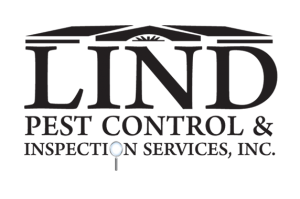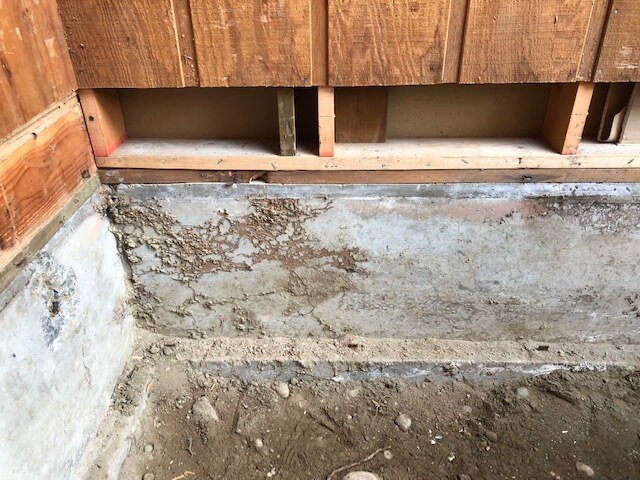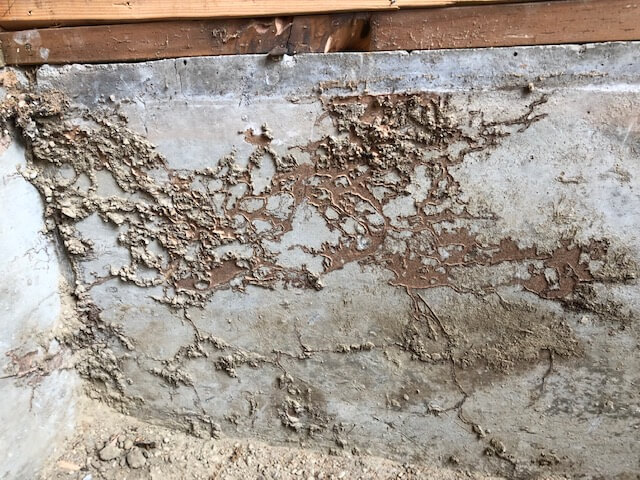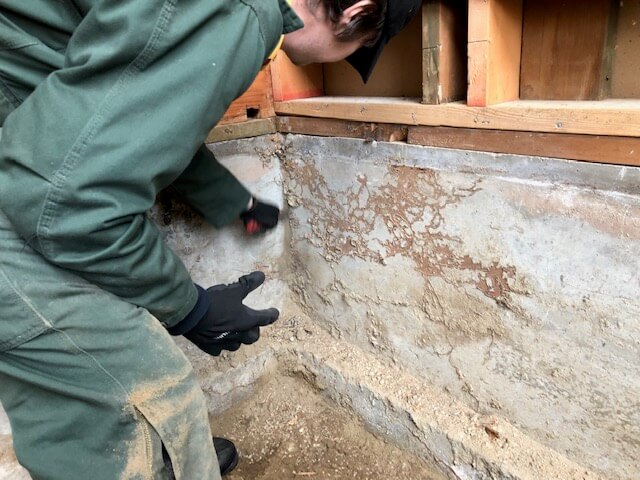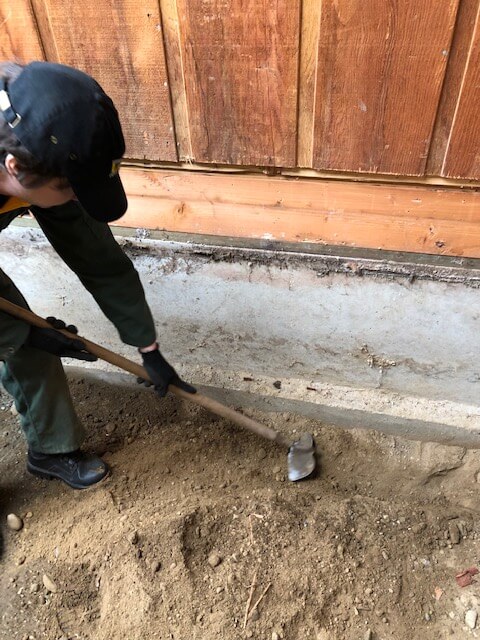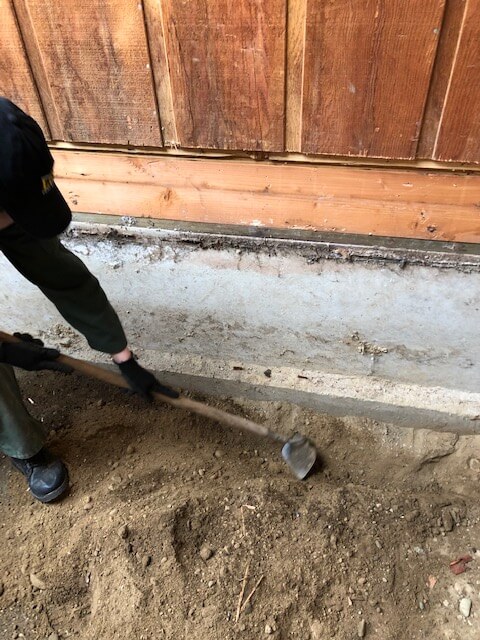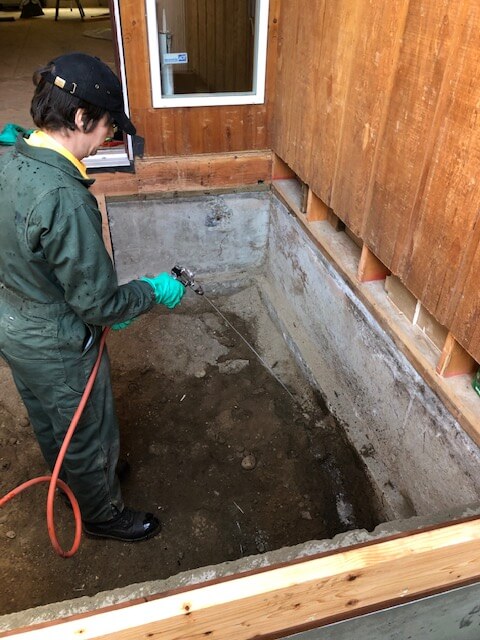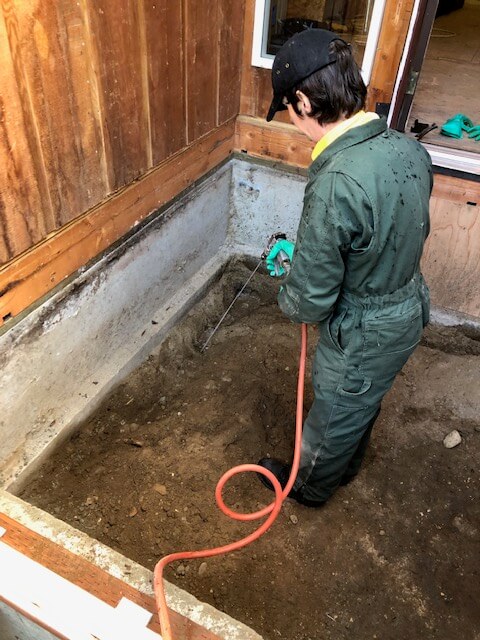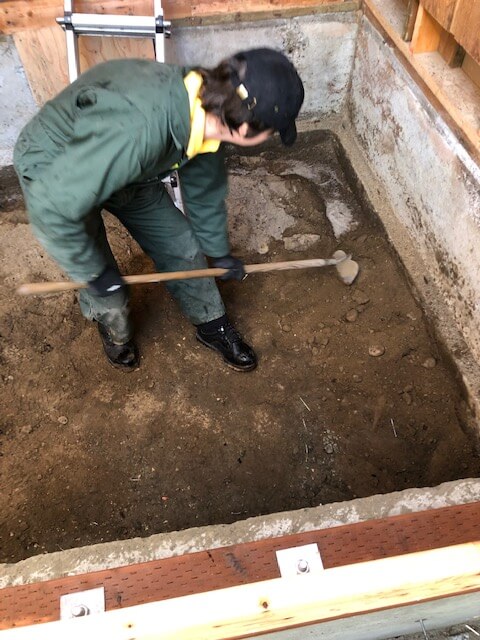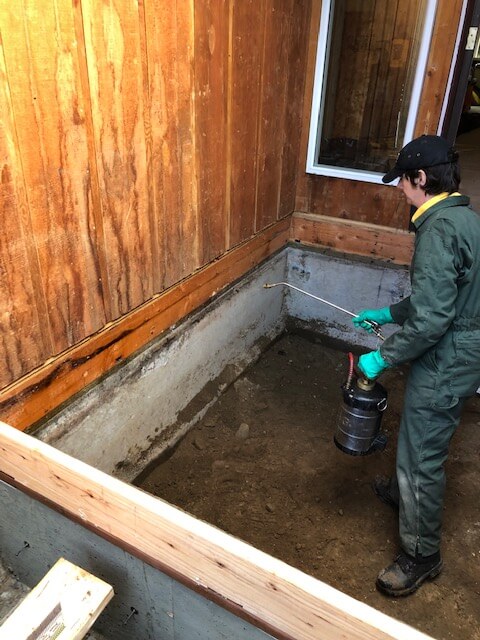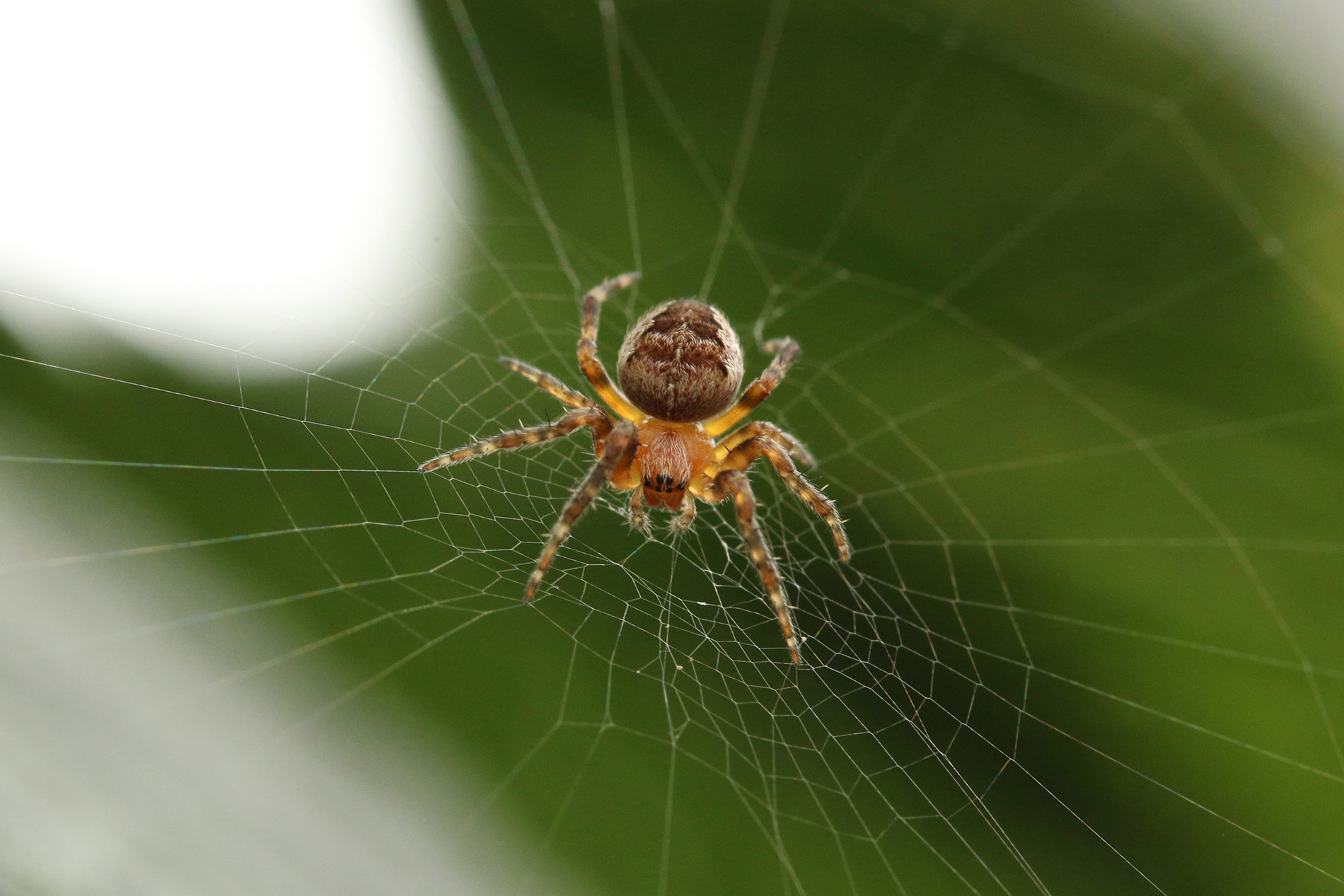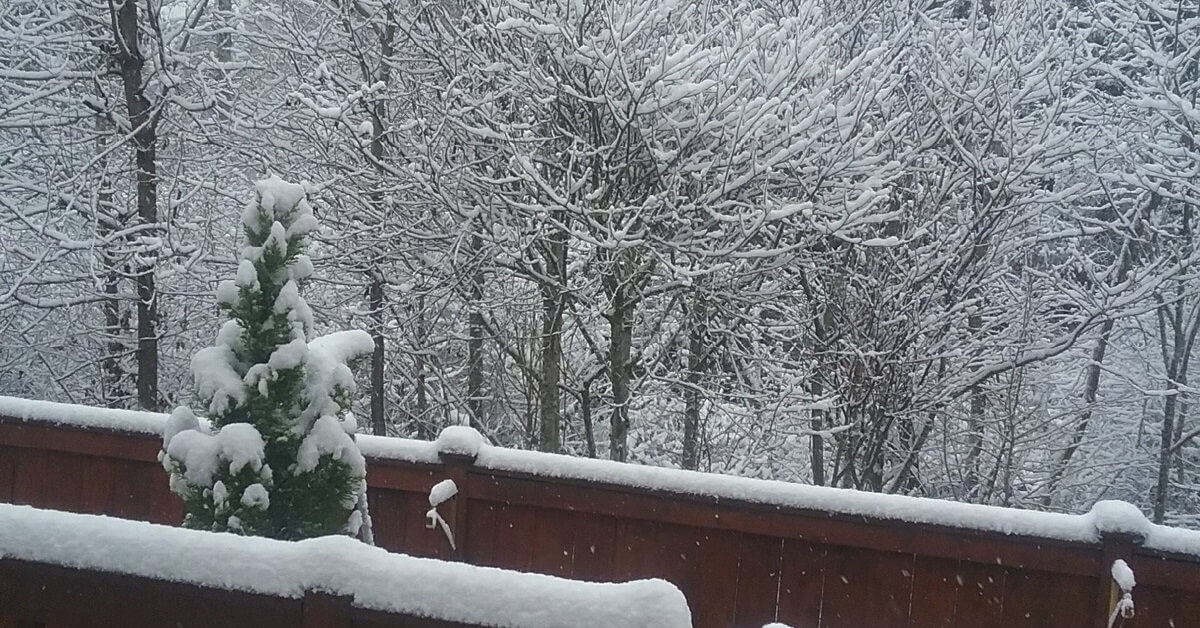Effective subterranean termite treatments require more than spraying chemicals. It is a multi-part process to ensure the termites present are eradicated and that they will not return.
Step 1 – The inspection
The first step is identifying subterranean termite “mud tubes”. As a homeowner, we advise you take regular walks around your house. Termites build these tubes out of dirt and fecal material in order to pass from the ground, where they live and nest, to the source of food (structural wood components of your home!!!)
Step 2 – Scraping and removing the tubes
Thoroughness throughout the process is of the utmost importance! Making sure all of the tubes are removed helps to catch any possible re-infestation.
Step 3 – Digging a trench
Digging a trench along the foundation footing is necessary to treat the colony underground and set up a barrier to prevent future infiltration.
Step 4 – 1st Treatment
The first treatment is applied in the trench using top quality EPA regulated termiticide materials.
Step 5 – Backfilling
Proper backfilling of the trench to ensure proper containment of the termiticide as well as protection from odors and exposure.
Step 6 – Treating the rim joist
The final step is treating the rim joist with a borate. Borate has a very low toxicity level and is highly effective in the preservation of your home’s important wooden substructure. This is an additional step to ensure the protection of your home.
Step 7 – Establish a preventive maintenance plan
This will ensure your home will remain pest free.
